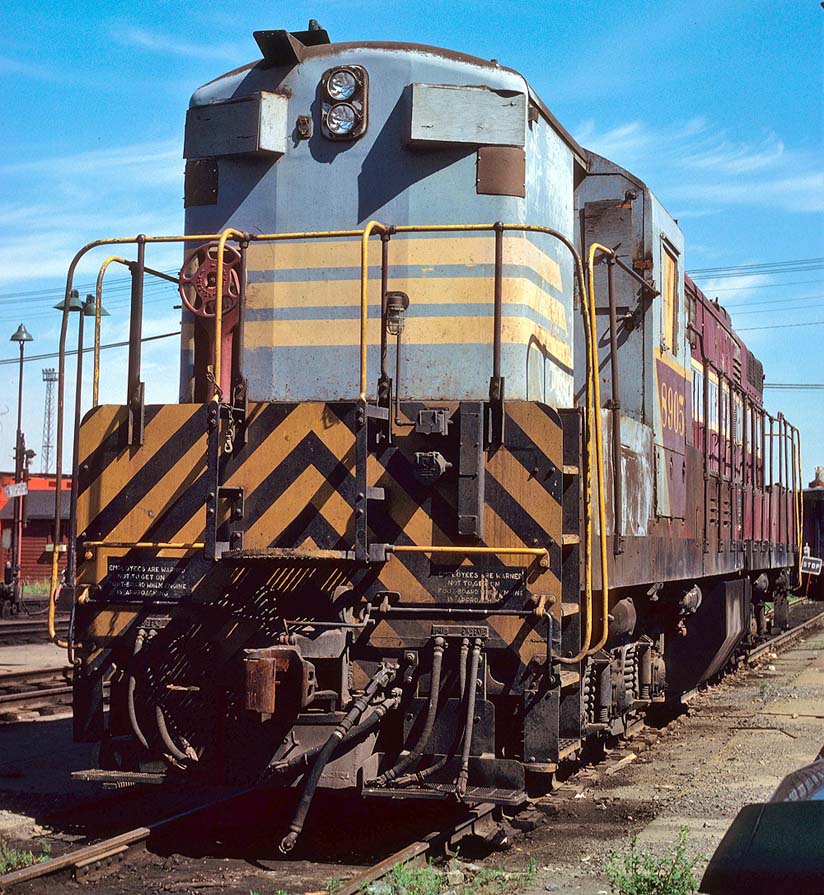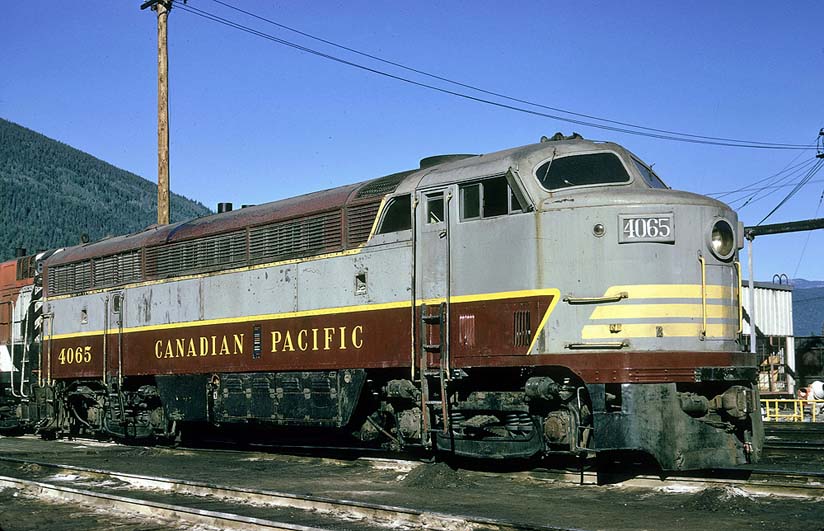
Canada - Historic diesel locomotives saved by the 2020s may be an odd lot of famous and barely memorable, but these units deserve our
respect and attention just as much as the first batch.
All of these, even the ones that proved to be technological dead ends, contributed in one way or another to the advancement and refinement of railroad
propulsion.
The H24-66, or Train Master, was the diesel that raised eyebrows when Fairbanks-Morse first introduced it in 1953, a 2,400 hp road-switcher capable of moving
trains quicker and easier than the competition.
The Canadian Locomotive Company also built Train Masters under license for that country's market.
Between 1953 and 1957, FM built 127 of them, and they showed up on the rosters of Southern Pacific, Canadian National, Canadian Pacific, Central Railroad of
New Jersey, Delaware Lackawanna & Western (later Erie-Lackawanna), Pennsylvania, Reading, Southern, Virginian, and Wabash.
Plagued by prime-mover reliability, the big units never really achieved their maximum potential.
A notable exception would be Southern Pacific.
After rebuilding them, SP found a home for their muscle on the demanding San Francisco Bay area commuter service between San Francisco and San
Jose.
In this service they were unequaled, able to maintain the rigorous start-and-stop schedule the operation demanded.
Only one unit, Canadian Pacific 8905 escaped the scrapper, and is at Exporail, the Canadian Railway Museum in Saint-Constant, Quebec.

Fairbanks-Morse, fresh off its success as a capable diesel engine manufacturer for U.S. Navy submarines, among other things, went full bore into the domestic
locomotive market.
Some models, especially end-cab switchers, and the now famous H24-66, eventually became reliable pieces of equipment.
Others however, being from what would become a minority builder, were quickly sidelined as engine and overall reliability problems emerged in prolonged
service.
Locomotives in the Consolidated Line, usually referred to as C-Liners, were available in a variety of models with four or six axles.
Some even had five axles, a two-axle front truck, and three-axle rear truck.
Originally buyers included Long Island, New York Central, New Haven, and Milwaukee Road, with both Canadian Pacific and Canadian National trying copies made
by Canadian Locomotive Corporation under license.
Some railroads, tired of the faulty prime mover, had them re-engined with EMD 567s.
Two cab units are known to still be intact.
One is apparently privately owned and not available for public viewing.
The other is Canadian Pacific 4065 at the Canadian Science and Technology Museum in Ottawa.
David Lustig.
 Article abridged - American railroad locomotives removed.
Article abridged - American railroad locomotives removed.
(there was no image with original article)
(usually because it's been seen before)
provisions in Section 29 of the Canadian
Copyright Modernization Act.
